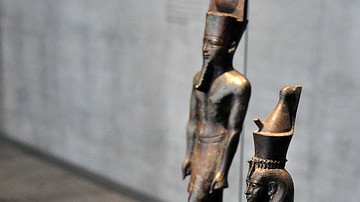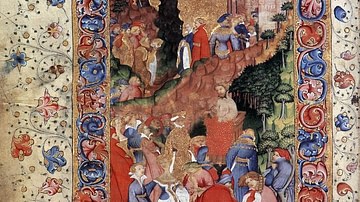Review

| Rating: | |
|---|---|
| Title: | Jamaican Art: Then and Now. Petrine Archer Straw & Kim Robinson |
| Author: | Petrine Archer Straw |
| Audience: | Professional |
| Difficulty: | Medium |
| Publisher: | Lmh |
| Published: | 2025 |
| Pages: | 240 |
"Jamaican Art: Then and Now," co-authored by Petrine Archer-Straw and Kim Robinson is a compressive exploration of Jamaica’s rich artistic heritage. The book delves into the evolution of Jamaican art, highlighting the works of notable artists such as Kapo, Edna Manley, and Carl Abrahams. It examines diverse styles and movements throughout Jamaica’s history that have shaped the island’s Art scene.
Jamaican Art: Then and Now is a captivating exploration of Jamaica's artistic journey, offering readers an expansive look at how the island's artistic journey has evolved over the years. Co-authored by the late Petrine Archer-Straw and Kim Robinson, this book serves as both a historical document and a celebration of the country's artistic diversity.
This is a rare book that introduces the world of Jamaican art in a way that seamlessly combines historical context with critical analysis, tracing the trajectory of Jamaican art from its early roots to contemporary expressions. The authors delve into the traditional art forms in Jamaica, highlighting influences such as colonialism, religion, and African heritage. Profiles of pioneering figures like John Dunkley, Mallica "Kapo" Reynolds, and Edna Manley showcase their immense contributions to shaping Jamaica's artistic journey and identity. As the narrative progresses, the publication examines the shift towards modernism and how contemporary Jamaican artists engage with themes of identity, politics, and global issues.
One of the book's greatest strengths is its depth and breadth of knowledge. Petrine and Kim provide a thorough examination of Jamaican art, blending scholarly research with accessible storytelling. The inclusion of a variety of artworks enhances the reading experience, making the book as visually compelling to read as it is informative. Furthermore, by situating Jamaican art within the broad context of the historical and social framework, the authors deepen readers' understanding of a movement that shaped the island and Caribbean tradition.
Although the book is a great resource, it could benefit from a more detailed discussion surrounding emerging artistic movements in the contemporary era. Additionally, the academic tone could be dense for casual readers who are not familiar with art history. Despite this, the publication content far outweighed these minor critiques.
This book can be compared with key texts such as Modern Jamaican Art (1998) by David Boxer and Veerle Popeye, which surveys 20th-century artistic developments. Modern Jamaican Art uses canonical figures and movements, a "then and now" perspective might delve deeper into underexplored areas such as experimental and interdisciplinary media, as well as the broader sociopolitical and global influences shaping Jamaican art. Moreover, Modern Jamaican Art uniquely highlights Jammaica's distinct artistic trajectory over time while connecting it to global trends. By juxtaposing colonial, post-colonial, and modern themes, the book offers a more inclusive and dynamic understanding of Jamaican art history.
Jamaican Art: Then and Now is an essential read for anyone interested in Caribbean art, heritage, and culture. It bridges the past and present Jamaican art, heritage, and culture, celebrating Jamaica's artistic culture while encouraging readers to reflect on its future direction. Moreover, it traces the historical foundations, exploring early art forms, the influence of colonialism, and the development of nationalist art movements during and after independence. A section on contemporary art highlights emerging media, global influences, and modern themes such as gender, migration, and politics.
A comparative analysis draws connections between historical and modern trends, emphasizing both continuities and transformations. Case studies of pivotal artists and exhibitions offer concrete examples of these shifts, while a chapter on art institutions like the National Gallery of Jamaica examines their role in fostering Jamaican art. The book concludes with reflections on the evolving identity of Jamaican art and its future in a global context. Archer-Straw and Robinson's work has been of great importance in documenting and preserving Jamaica's art history.
About the Reviewer
Cite This Work
APA Style
Gordon, J. (2025, February 24). Jamaican Art: Then and Now. Petrine Archer Straw & Kim Robinson. World History Encyclopedia. Retrieved from https://www.worldhistory.org/review/504/jamaican-art-then-and-now-petrine-archer-straw--ki/
Chicago Style
Gordon, Javíer. "Jamaican Art: Then and Now. Petrine Archer Straw & Kim Robinson." World History Encyclopedia. Last modified February 24, 2025. https://www.worldhistory.org/review/504/jamaican-art-then-and-now-petrine-archer-straw--ki/.
MLA Style
Gordon, Javíer. "Jamaican Art: Then and Now. Petrine Archer Straw & Kim Robinson." World History Encyclopedia. World History Encyclopedia, 24 Feb 2025, https://www.worldhistory.org/review/504/jamaican-art-then-and-now-petrine-archer-straw--ki/. Web. 27 Apr 2025.




